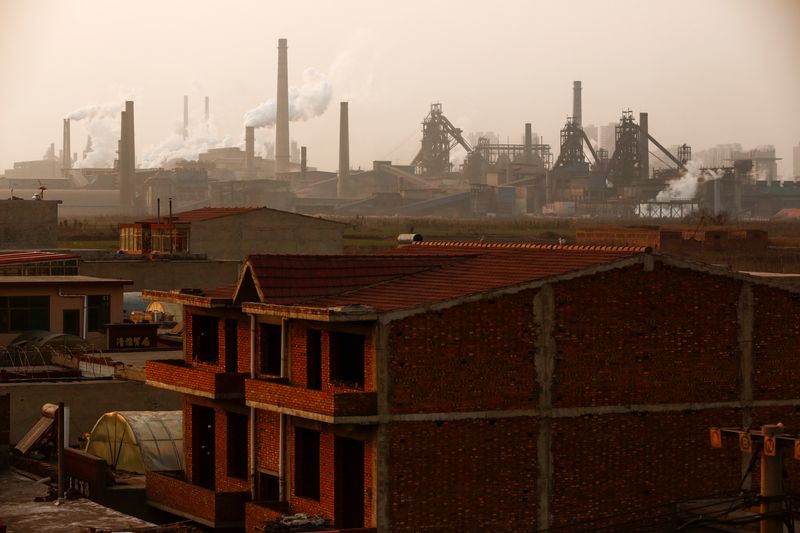BEIJING (Reuters) -China's producer prices fell at their fastest pace in over seven years in June, while consumer prices teetered on the edge of deflation, adding to the case for policymakers to use more stimulus to revive sluggish demand.
The worsening factory-gate price deflation and the move by consumer prices towards deflation for the first time since February 2021 bode ill for China's economic growth.
Momentum in China's post-pandemic recovery has slowed from a brisk pickup seen in the first quarter with demand for industrial and consumer products weakening, raising concerns about the health of the world's second-largest economy.
"We think the more challenging deflation environment and sharp slowdown in growth momentum support our view that the PBOC has entered a rate-cutting cycle," said economists at Barclays in a research note.
The producer price index (PPI) fell for a ninth consecutive month in June, down 5.4% from a year earlier, the National Bureau of Statistics (NBS) said on Monday, the steepest decline since December 2015. That compared with a 4.6% drop in the previous month and a 5.0% fall tipped in a Reuters poll of analysts.
The consumer price index (CPI) was unchanged year-on-year, compared with the 0.2% gain seen in May, driven by a faster fall in pork prices. That dashed expectation for a 0.2% rise and was the slowest pace since February 2021.
Nomura expects consumer prices to fall 0.5% year-on-year in July, even taking into account a potential rise in service inflation as a result of the summer holiday season.
The weaker-than-expected inflation readings knocked financial markets with the yuan falling and Asian stocks also dipping into the red.
"We expect headline inflation to rise to around 1% by the end of this year. But this would still be soft and won't constrain the PBOC's ability to loosen policy further," said economists at Capital Economics.
"That said, with credit demand weak, and the currency under pressure, we think the bulk of support will come through fiscal policy. We expect only another 10 basis points of policy rate cuts this year."
Beijing has set a target for average consumer inflation in 2023 of about 3%. Prices rose 2% year-on-year in 2022.
China last month cut policy rates to boost liquidity and vowed to take measures to promote household consumption.
For producer prices, the biggest year-on-year declines were seen in energy, metals and chemicals as domestic and foreign demand weakened.
"The accelerating decline in PPI reflects the still weak real estate and construction sector as well as the strength of industrial production," said Bruce Pang at chief economist at Jones Lang Lasalle.
"However, the year-on-year decline in the PPI is likely to have bottomed out and is expected to narrow gradually in the second half of the year," said Pang.

China's central bank is likely to cut lending rates further, said Hu Yuexiao, analyst at Shanghai Securities, who expects reductions in the reserve requirements ratio and interest rates in the second half.
However, economists say small cuts in rates will not have a big impact on demand for loans as families and businesses repair balance sheets damaged by COVID and repay debts, forcing Beijing to rely on fiscal stimulus and other means to spur demand.